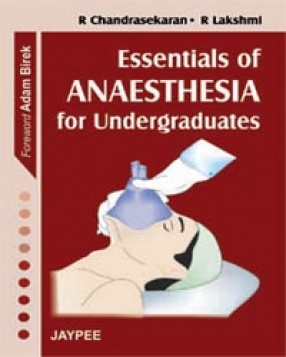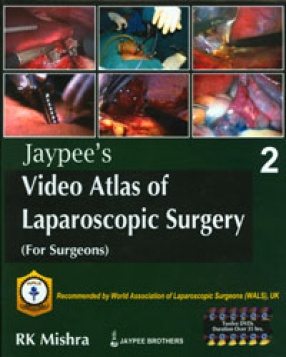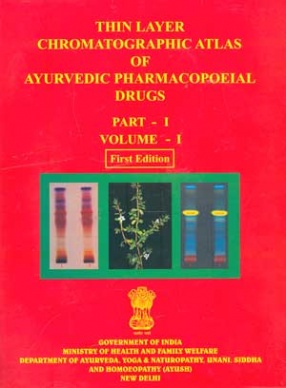Contents: Vol. I. Preface. Rheology/Alfred N. Martin, Gilbert S. Banker and A.H.C. Chun: 1. Theoretical considerations. 2. Instrumentation. 3. Applications and practice. References. Solubility in systems containing surface-active agents/B.A. Mulley: 1. Introduction. 2. Micelle formation and physical methods of investigation of micellar solutions. 3. Theory and Mechanism of solubilization. 4. Measurement of solubility and methods of representing solubility data. 5. Phase equilibria in systems containing surface active agents. 6. Some factors in the formulation of pharmaceutical products containing solubilized materials. 7. Review of pharmaceutical products. 8. Table of solubilities. References. Preservation of emulsions against microbial attack/Doreen L. Wedderburn: 1. Introduction. 2. The need for preservation. 3. Influence of specific factors on preservatives. 4. Mechanism of action of preservatives. 5. Interaction between emulsion ingredients and preservatives. 6. Prediction of preservative efficiency. 7. Confirmatory tests for preservative effectiveness. 8. The safe use of preservatives. References. Contemporary trends in heat sterilization/G.R. Wilkinson and L.C. Baker: 1. Historical. 2. Time and temperature relationships. 3. Mechanism of kill. 4. Determination of the efficiency of sterilization. 5. Criticism of sterility tests. 6. Thermodynamic considerations. 7. Inactivation of viruses. 8. Sterilization at sub-atmospheric pressures. 9. Materials of pharmaceutical interest requiring sterilization. 10. Basis of autoclave design. 11. Steam. 12. Effect of air during sterilization and its removal. 13. Protection against undue pressure. 14. Cooling the load within an autoclave. 15. Sterilization of fabrics. 16. Vacuum-assisted autoclaves for fabrics. 17. Methods of obtaining vacuum within autoclaves. 18. Control systems for autoclaves. 19. Controlling the sterilizing period and integration of time and temperature. 20. Types of integrator. 21. Methods of operative autoclave valves. 22. Further type of controller. 23. Problems associated with certain loads. 24. Filters. 25. Care of autoclaves. 26. Steam pressure reducing valves for autoclaves. 27. Testing the behaviour of autoclaves. 28. Design. 29. Steam supply. 30. Control systems. 31. Autoclave room. 32. Noise output. 33. Heat output. 34. Hot-air sterilization. References. Author index. Subject index. Vol. II. Preface. Kinetics and mechanisms in stability of drugs/Edward R. Garrett: 1. Introduction. 2. Basic kinetics and methods. 3. Kinetic studies on drugs in solution. 4. The vitamins and the stability prediction of complex mixtures. 5. Antibiotics, antibacterials, antivirals and the stability prediction of drugs of unknown structure. 6. Kinetic studies on pharmaceutical adjuncts. 7. Degradation of drugs in solid-dosage forms. 8. Conclusions. References. Particle-size analysis/I.C. Edmundson: 1. Introduction. 2. Particle size and shape. 3. Average particle size. 4. Numerical and graphical presentation of particle-size analysis results. 5. Analytical methods. References. The flow properties of powders/Barbara S. Neumann: 1. Introduction. 2. A classification of some basic properties of powders. 3. Evaluation of the fundamental properties of powders in relation to the flow properties. 4. Flow properties of various powder systems. Conclusion. References. Water determination and its significance in pharmaceutical practice/C.A. Johnson: 1. The significance of water in pharmaceutical practice. 2. The nature of water content. 3. Drying methods. 4. Distillation methods. 5. The Karl Fischer method. 6. Other chemical methods. 7. Methods involving measurement of electrical properties. 8. Spectroscopic methods. 9. Gas chromatography. 10. Continuous-process moisture control. 11. On the choice of method. References. Author index. Subject index. Vol. III. Preface. Recent advances in tablet technology/Jack Cooper: 1. Introduction. 2. Therapeutic objectives. 3. Formulation. 4. Processing. 5. Quality standards for tablets. 6. Biopharmaceutics. 7. Conclusion. References. The formulation of aspirin/B.K. Martin: 1. Introduction. 2. Some physical and chemical properties of aspirin. 3. Clinical use and therapeutic requirements. 4. General considerations. 5. Potential effect of drug absorption rate on drug action. 6. Current formulations of aspirin. 7. Factors influencing drug absorption. 8. Potential effect of formulation on drug distribution and eliminations. 9. Relation of side-effects to formulation. 10. Assessment of product. References. Cohesive pharmaceutical powders/N. Pilpel: 1. Introduction. 2. Angular characteristics. 3. The split plate method. 4. Shear measurements. 5. Effect of particle size. 6. Effects of moisture. 7. Glidant action and caking. 8. Effect of temperature. Notation. References. Author index. Subject index. Cumulative list of authors. Cumulative list of titles. Vol. IV. 1. Rheology of pharmaceutical and cosmetic semisolids/B.W. Barry. 2. Determination of thermodynamics of functional groups in solutions of drug molecules/S.S. Davis, T. Higuchi and J.H. Rytting. 3. Radiopharmaceuticals/D.E. Lovett. 4. Rectal administration of drugs/N. Senior. Subject index.
Advances in Pharmaceutical Sciences (Volumes I-IV)
In stock
Free & Quick Delivery Worldwide
reviews
Bibliographic information
Title
Advances in Pharmaceutical Sciences (Volumes I-IV)
Author
Edition
Reprint
Publisher
Academic Press, 2009
ISBN
8131217894
Length
1350p., Tables; Figures
Subjects





There are no reviews yet.